Baking Essentials: The Creaming Method
Learn what “the creaming method” is, how it’s used in baking recipes, and some tips and tricks for success!
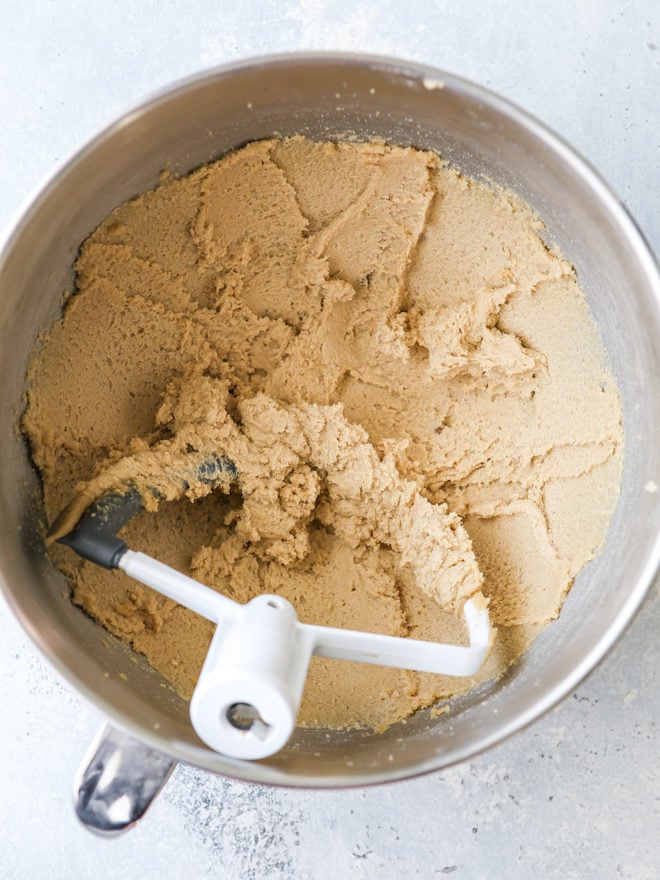
What is the Creaming Method?
Any time a recipe asks you to beat or “cream” butter and sugar together at the start of the recipe, you’re using the creaming method.
It’s used most often in cookies and cakes, and it’s maybe the most important step in the whole recipe. It affects rise, texture, and structure. If fat and sugar are creamed together properly, cakes will be light and fluffy, and cookies will hold their shape and not spread too much.
So let’s talk about how to do it right!
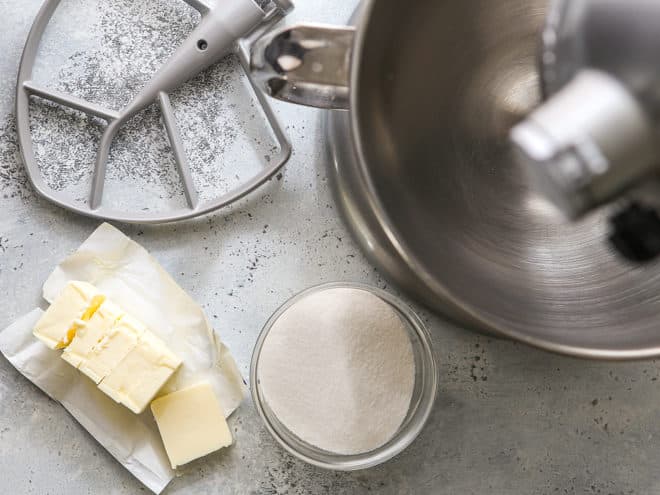
What You’ll Need
You’ll need the following ingredients and supplies to get started:
- Fat— usually butter or shortening, but other non-liquid fats like coconut oil will work too. Butter should be slightly softened to room temperature, but not at all melted or greasy.
- Sugar— such as granulated sugar, brown sugar, powdered sugar, etc.
- Electric mixer— you can use a stand mixer or hand-held mixer, but a stand mixer fitted with a paddle attachment will produce the best results. You can also do this by hand, but be prepared to use a lot of elbow grease!
How to Use the Creaming Method
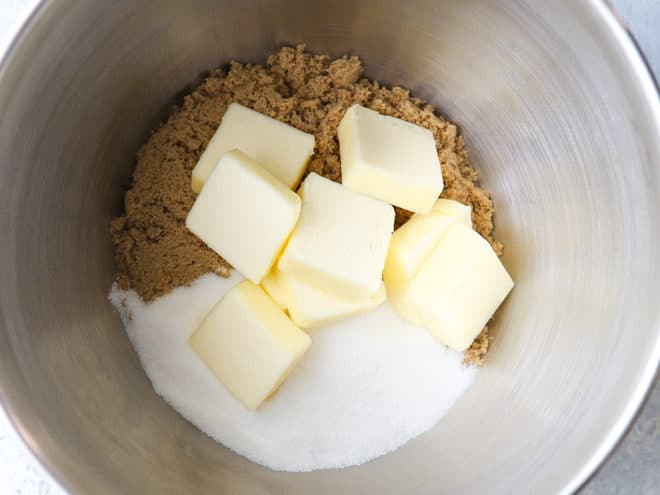
Place the sugar and butter in the bowl of your stand mixer, or another bowl if using a hand-held mixer.
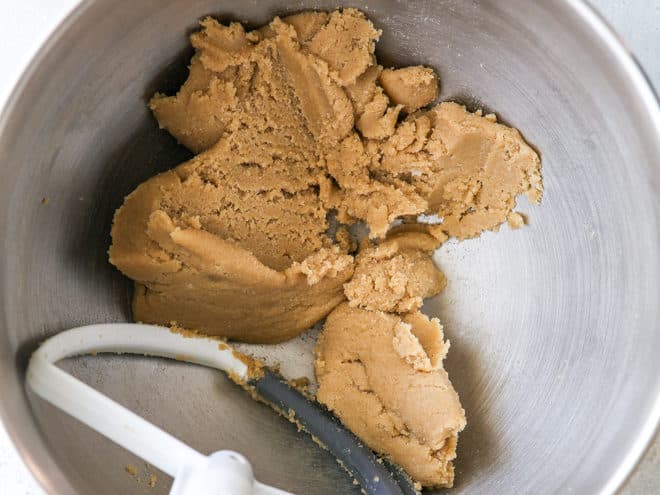
Begin mixing on medium high speed, stopping the mixer and scraping down the beater and bowl once or twice.
The photo above shows the butter and sugars beaten just until combined, about less than 1 minute of mixing. But you’re not done, keep beating!
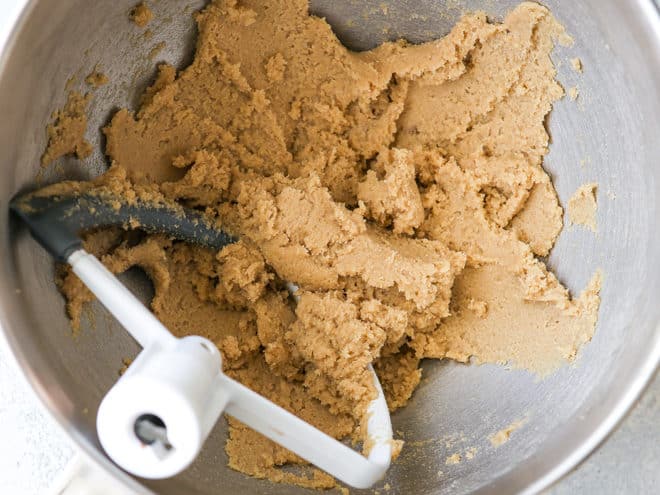
What happens during this time is the sugar granules are cutting tiny holes into the butter, which incorporates air, and causes the butter to soften and increase in volume. You’ll notice the batter change drastically in color and texture.
The photo above is around 2 minutes of beating. The mixture has lightened in texture and started to stick to the sides, but it’s still not quite there.
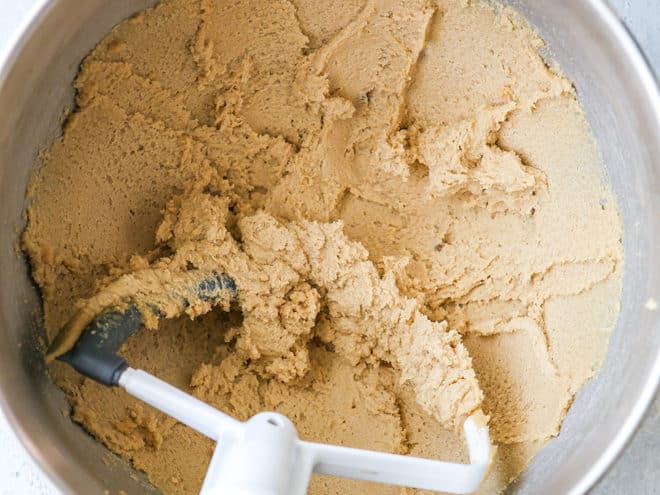
This is after 3-4 minutes of beating, but since mixers will run at different speeds, time is variable. Note, that if you’re using a hand-held mixer this will take a lot longer.
The photo above is what we’re aiming for!
Your mixture is properly creamed when:
- It appears very light in both color and texture
- It has almost doubled in volume
- Sugar granules are no longer visible, but you can still feel them if you rub a little of the batter between your fingers
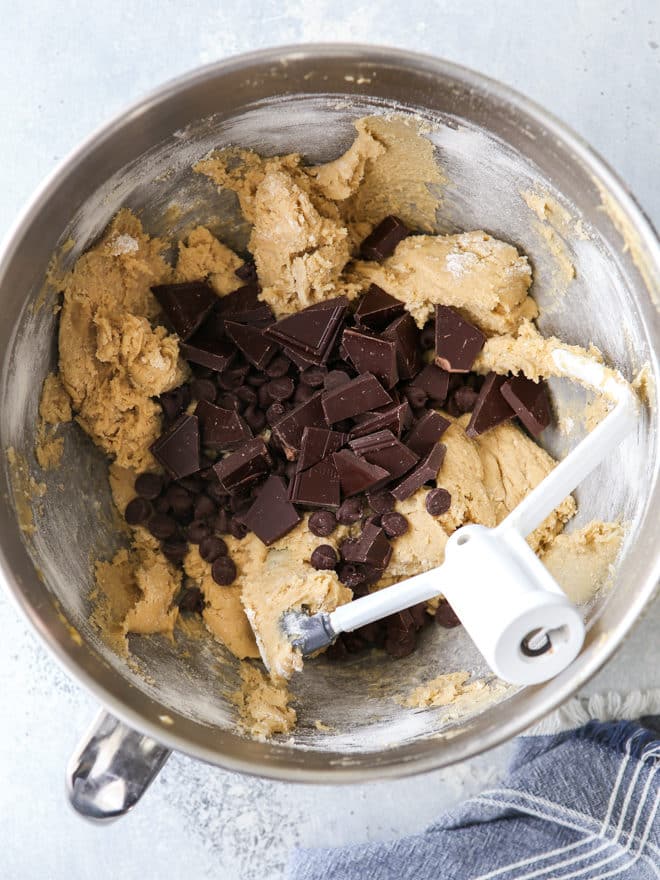
Once you’ve properly creamed the butter and sugar together, you can proceed with the rest of your recipe.
If you’re making a cake:
- Add eggs one at a time, mixing after each. Because you’re creating an emulsion of the liquid in the eggs with the fat in your creamed mixture, and adding the eggs gradually will help them incorporate better.
- Mix in vanilla or any other flavorings.
- Add combined dry ingredients in 3 additions, alternating with remaining liquids. This is so you don’t overwhelm the batter, and adding ingredients gradually ensures everything mixes evenly.
- Mix only until batter is combined and no streaks of dry ingredients remain. Do not overmix or you will create a tougher end product.
If you’re making cookies:
The method is very similar to that of cakes.
- Add eggs one at a time, mixing after each.
- Mix in vanilla or any other flavorings.
- Add combined ingredients all at once.
- Mix until dough is mostly combined, but a few streaks of dry ingredients remain.
- Add any mix-ins like chocolate chips and mix just until incorporated.
Tips for success
- I’ve mentioned this already, but always start with butter at the right temperature. Your finger should leave a small indent when pressed into the butter, but should not easily press through the butter. I usually set my butter out on the counter about 30 minutes before I want to get started.
- If you’re using a stand mixer, always use the paddle attachment. The wire whisk attachment will not produce the same results.
- Don’t forget to stop the mixer and scrape down the bowl a few times while mixing to make sure your mixture will be uniform.
- When making cakes, make sure the rest of your dairy ingredients and eggs are also at room temperature. This will produce the best rise and texture.
- Be sure to measure flour correctly.
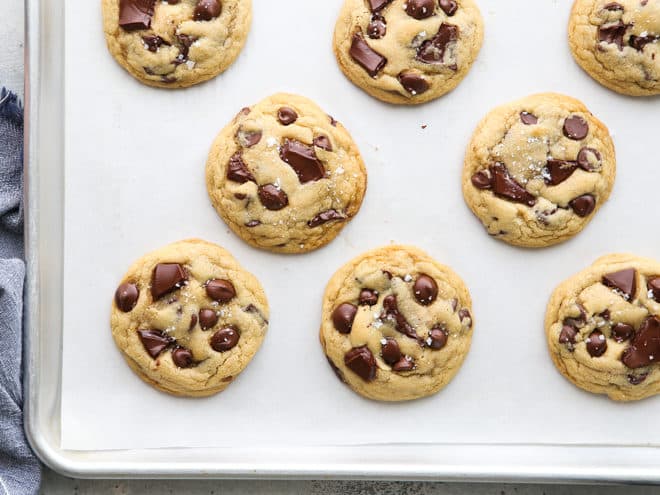
What is the Reversed Creaming method?
Some recipes use a variation called the reverse creaming method, which means all the dry ingredients are beaten together with the butter before the eggs and liquids are added at the end.
Many of my cakes use this variation, like my coconut cake or brown sugar cinnamon cake. I’ve found that cakes made with the reverse creaming method are very light and velvety, but it’s not a huge difference.
Let’s Use the Creaming Method!
Here are a few favorite recipes that use this method of baking:
- Classic Chocolate Chip Cookies (pictured in this post)
- Funfetti Layer Cake
- Soft and Chewy Chocolate Cookies
- Snickerdoodle Cookies
- Vanilla Cupcakes with Fudge Frosting
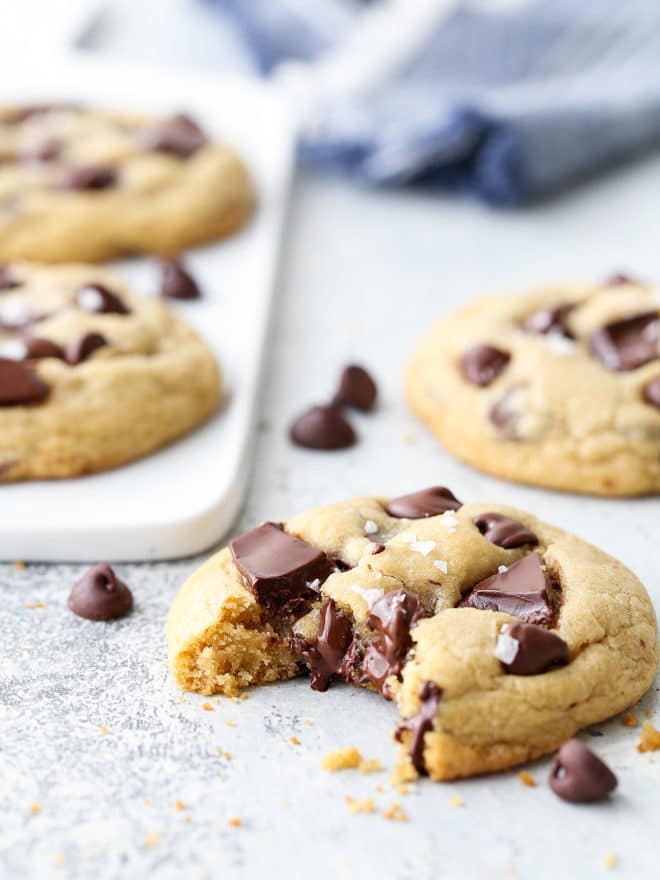
This post was originally published May 2013.

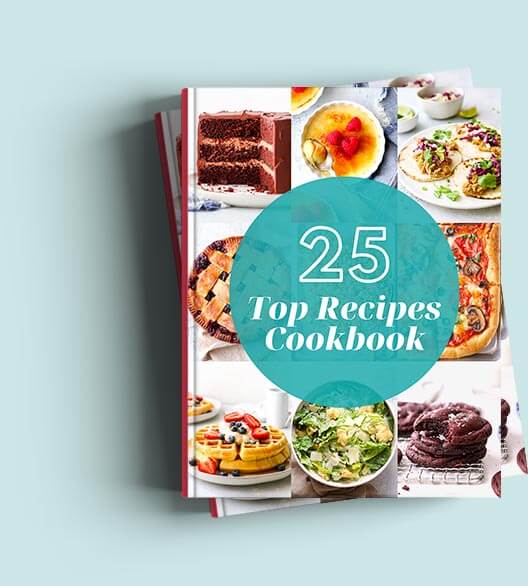
Love the step by step and tips! So helpful!
Amazing and truly helpful post, thank you for sharing these tips!
xo, Elisa
Excellent, detailed explanations and photos. THANK YOU for giving the speed number on your Kitchenaid. I always have a little bit of doubt in my mind when recipes say things like “low speed” or “medium heat.” I know what those things are, but it’s good to know an exact number or setting that the recipe writer used. Great post.
I Love them
Perfect post! I think so many people (including myself at one time) didn’t really know what it meant to cream something! Or they melt the butter in the microwave.
I love this series, baking can be intimidating for some people. This demystifies it, love that.
What’s up to all, it’s really nice for me to pay a visit on this web page, it includes precious information. Thanks!
I just had to say that I agree with you about the paddle attachment on the stand mixer.I am pretty sure when creaming the butter for buttercream frosting you can not use your hand or even a hand held mixer.And my Kitchen Aid mixer was only 180 not 300.Your post about the correct way to cream was lovely.And if people have nothing nice to say then they should not say anything at all!!
Hi there, just wanted to mention, I enjoyed this blog post. It was inspiring. Keep on posting
Thank you!
what are the different cake types example; rubbing in, creaming
Hi I enjoyed this blog post. Keep on posting
Really many thanks for this post! The method is extremely well explained and it has been very useful for me! Thanks a lot!
Agnese
To cream sugar and butter in a stand mixer using regular, not paddle, beaters, I can’t seem to get it to a creamy consistency. How long should I beat it at medium speed to get it creamy ?
Thank you.
Paddle attachments may work well, but I think they’re highly overrated – exquisite baking was produced for centuries before there were stand mixers with paddle attachments, although presumably with more elbow grease. My stand mixer doesn’t have a paddle attachment, but I produce perfectly lovely baked goods with it using the large beaters.
Yes, sincerely appreciate the information is elaborate to the point. All said, we surely need the right tools for a perfect job.
Hi, my cookie dough turns out greasy which results in my baked cookie being greasy as well… what could be the problem with this? Is it the temperature of the butter or something else?
I would guess butter temperature, and/or that the butter and sugars mixture wasn’t beaten long enough. Butter should be soft enough that your finger will leave an indent when pressed, but not so soft that your finger is able to press all the way through the butter. If the butter is shiny or melty at all, it’s too warm and your cookies will spread and be greasy. Hope this helps!